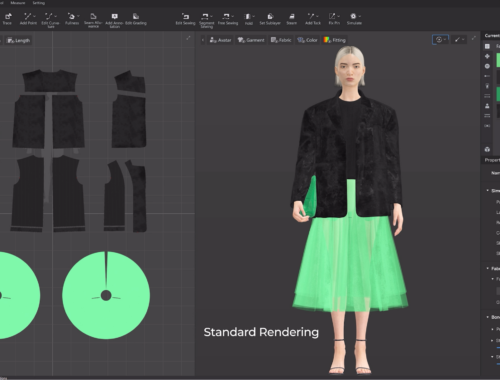What to Pack for a Climbing Trip in the Sierra
>
When you buy something using the retail links in our stories, we earn an affiliate commission that helps pay for our work. Read more about Outside’s affiliate policy.
I left San Francisco in the early afternoon, barely beating the notorious I-80 traffic out of the city. I was headed toward Yosemite to climb for a week—stoke was high, plans were loose. An hour into the drive I got a text that read, “Cathedral lap tonight?” With that, the adventure began. I arrived at the trailhead around 5 p.m. and quickly threw my gear into a bag. Time was precious—we had three hours before sunset.
After a 45-minute approach we got to the base of the massive granite spire we planned to climb. Since the first ascent by John Muir in the 1800s, Cathedral Peak has been an iconic destination. Feeling comfortable on our moderate 5.7, Sterling and I decided to simul-climb, leaving 50 feet of rope loosely hanging between us. Like much of the climbing in the expansive Tuolumne Meadows, our route had everything—hand cracks, knobby slab, and even a chimney to stem up. We reached the summit with an hour of light left and quickly made our way down, using headlamps to get back to the cars.
While Tuolumne is filled with scenic lakes, ancient pines, and seemingly endless granite slab, the most amazing part is the solitude. On a warm Friday evening in August, we saw one other party. That was it.
Getting to Tuolumne isn’t difficult. Take Highway 120—the park thoroughfare—east from the valley and in less than an hour you’re in alpine climbing paradise. With a base elevation of 8,500 feet, Tuolumne has a number of classic high-country routes, like Matthes Crest, Cathedral Peak, and Mount Conness. The area is known for clean rock and granite domes with a mix of face and crack climbing. During summer, thunderstorms are common, lasting a few hours or a few days. Mosquitoes are common in the area too.
Over the course of the week the gear we used varied greatly. We went through wide variety of cams and nuts, long slings, good helmets for loose rock, and comfortable approach shoes (some of the best rock is pretty far from the road). Here are the pieces of gear we relied on the most, day in and day out.
Many of the routes in Tuolumne are longer and lower-grade, so I often employ a shoe with a more relaxed fit, such as the new Momentum from Black Diamond. It’s comfortable and extremely breathable—great for warm days on long multipitch routes—with proprietary rubber that sticks to about everything.
Buy Now
For long approaches like the three-mile trek to the base of Cathedral, I’ll throw on a pair of Mescalito approach shoes. They’re lightweight and comfortable and have enough rubber to safely scramble up big slabs, through boulder fields, and up scree slopes.
Buy Now
I put a big emphasis on versatility with all my gear, stuff that can be used effectively for multiple sports like trad, alpine, and ice climbing. The Adjama has just the right balance of comfort, gear loops, weight, and freedom of movement.
Buy Now
The standard Metolius comp bag is a simple and durable design. For this specific chalk bag, the company donates a portion of the proceeds to the Access Fund to protect American climbing areas, which I love. Pair that with the most reliable chalk I’ve ever used, Unicorn Dust, and you’ll be able to hold on to things you wouldn’t otherwise.
Chalk Bag Chalk
Like most of the items on this list, the ropes I prefer are appropriate for all kinds of uses—in this case, single, half, or twin—and work as well in the alpine as they do on trad routes in Yosemite. The Volta Guide 9 is lightweight and low in bulk, and it still keeps you safe. That’s the perfect balance for me.
Buy Now
With loose rock it’s always important to wear a helmet. The is Vapor my go-to. It’s incredibly light and comfortable and good for a variety of mountain adventures, especially ones in warmer weather when breathability is a high priority.
Buy Now
I stuff all my gear in a Mutant, a nimble climbing pack that’s the perfect crossover for both long day missions and full light-and-fast weekends. A couple gear loops, rope and helmet carry, and a snug fit make it the ideal mixed-use pack.
Buy Now
Both of these jackets are light, durable, and stretchy. Very stretchy. That’s a big advantage while climbing long routes with a variety of movements. Yes, a rainjacket may seem like overkill, but you’ll thank me after you sit out a late-afternoon storm and still stay dry. If it’s a cold day, the brand-new Stretch Down is a lightweight contingency plan that’s easy to stuff at the bottom of your pack and forget—until you need it.
Buy Stretch Down Buy Ozonic
I use a GPS watch while climbing, probably as a vestige of my trail-running background. That said, it frequently comes in handy. The battery lasts forever, it’s waterproof, and the altimeter and route tracking are helpful for finding my way.
Buy Now
You May Also Like

AI in Fashion: Revolutionizing Design, Shopping, and Supply Chains
February 28, 2025
Generated Blog Post Title
March 1, 2025